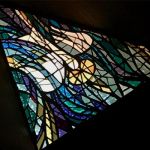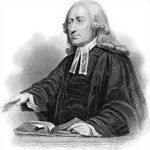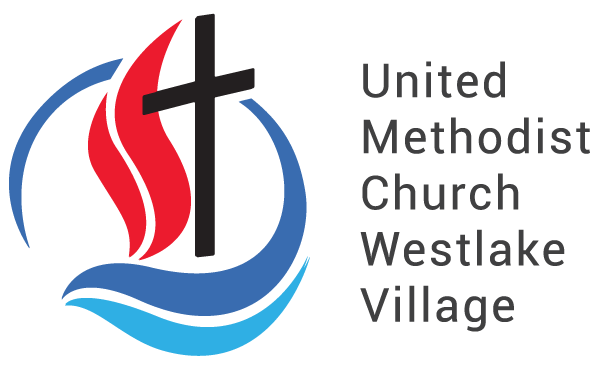Who We Are
For more than 50 years, “The Church on the Corner” has been a landmark in Westlake Village, California. United Methodists seek to follow Christ with “Open Hearts, Open Minds, Open Doors” and to lead loving lives of meaning, hope and compassion for others. At UMCWV, we strive to be a diverse, inclusive and multi-generational congregation that is welcoming, inspiring and making a positive difference in our community. We are well-known for our exceptional music program for all ages, and our excellent weekday preschool, The Growing Place. Come join us for our 10 a.m. Sunday service, in-person or online, or any of our enriching programs and you’ll see why so many call UMCWV home.
 What We Believe
What We Believe
The United Methodist Church (UMC) is grounded in the life, death and resurrection of Jesus Christ. What United Methodists believe is not an easy question to answer since our people don’t agree on all aspects of doctrine exactly the same.
The distinguishing marks of a United Methodist are probably best illustrated by a commitment to the basics of Christianity and by a Christian lifestyle.Read More
Our Local Story
The United Methodist Church of Westlake Village (UMCWV) held its first worship service in the First Neighborhood Community Center on September 15, 1969, with 30 people received as charter members. The congregation was officially chartered on May 24, 1970, and had more than 200 members by the end of that year. Read More
The original sanctuary, office wing and east wing had served as the Westlake Information Center (a real estate office) at the corner of Lakeview Canyon and Agoura roads. When the buildings were to be torn down, the church salvaged them for the cost of having them moved.
On March 13, 1971, the buildings were moved to our present location. The first service was held in that sanctuary-in-the-round on May 9, 1971. At the same time, the UMC of Westlake Village entered into a Covenant Relationship with the Westlake Lutheran Church. The two congregations shared the facilities, a common faith in Jesus Christ and love for one another until the Lutherans moved to their own facility in 1994.
Temple Adat Elohim also became part of Covenant House in June 1972, and a banner designed to adorn the sanctuary stated simply, “My house shall be a house of prayer for all peoples.” This covenant relationship with the Temple continued for seven years.
Alton Hall was built to match the original style of the sanctuary building with the help of church members in seven months, opening for church school classes on Feb. 8, 1976. The building is named after Mrs. Elizabeth Alton who left her entire estate to the church.
Expansion of the sanctuary and adjacent wings began in 1984 and most of the stained glass windows were installed before it was consecrated on June 30, 1985. The Youth Building was added to the facilities in 1987 with a celebration of its completion on March 8th. The Rodgers Oxford 945 electronic and pipe organ, donated in memory of Connie Richardson, was installed in the sanctuary in 1992. The Christian Education Building was completed and dedicated on Sept. 10, 1995. The Sampson Prayer Chapel opened in 2002 – given by Shirley Richards in memory of her father, the Rev. Delbert J. Sampson, a United Methodist minister in Nebraska and Colorado. The Meditation Garden was dedicated on September 7, 2008. The parking lot replacement, Rose Garden in front of the Youth Building and flagpole installation were completed early in 2009. A Peace Pole was added in front of Alton Hall in 2012, dedicated in honor of retiring UMC Bishop Maryann Swenson.
Since 1977, as a program agency of the church, The Growing Place Preschool (www.GrowingPlaceWLV.org) has used during the week the classrooms in the education buildings and the play yard.
Each United Methodist is a member of Christ’s worldwide Body, a church that transcends the centuries and includes people of all cultures, nations and denominations. As a “connectional” church, the UMCWV is part of the North District of the California-Pacific Annual Conference of the United Methodist Church.
Our Mission
Our Mission (or Purpose) is “To make, mature and mobilize disciples of Christ for the transformation of the world.” Our Focus (or Vision): “The United Methodist Church of Westlake Village is a caring Christian Community that welcomes everyone to experience the loving embrace of God, nurtures one another, and reaches out to the community and the world through a personal relationship with Jesus Christ.”
Our Stained Glass Windows
The Hogan Studios in Crescent City, California, made the stained glass windows in the sanctuary and its entrance (narthex). Roger Hogan, nationally known as a stained glass artisan, was willing to work with the late artist Duane Gordon’s designs. Duane and Kathi Gordon were charter members of the church; they moved from Westlake Village to The Sea Ranch in 1981.
The windows are made of faceted glass that is one inch thick; no individual piece of glass is larger than 8-12 inches. The process involves making slabs of glass with a variety of permanent colors fired into them, cutting the slabs into the shapes needed with a diamond saw, chipping facets into each piece by skillfully striking the glass surface with a hammer to make a multi-surfaced crack, molding the pieces together with epoxy to create a leaded look and giving the exterior a sand finish. The facets in stained glass produce light diffusion that makes the windows sparkle when the light shines through them.
Baptism Windows – When entering the sanctuary, people are reminded that receiving the Sacrament of Baptism is how they are brought into the fellowship of Christ’s holy church. Worked into the design are the baptismal shell, the dove representing the Holy Spirit, the three fishes to remind us of the Trinity and the Maltese cross of regeneration.
The Holy Spirit Window is a triangular shape symbolic of the Trinity, with the Holy Spirit represented by the descending dove.

Stalks of wheat and clusters of grapes represent the elements of bread and wine in the five Communion Windows. The downward motion of color symbolizes what God has given to us. We remember Christ’s body given for us when we partake of the bread and Christ’s blood of the new Covenant shed for us when we drink the cup of unfermented grape juice or wine.
The lilies and leaves in the four Resurrection Windows represent Easter and spring, a time of new life and, as the upward flow of color indicates, flowing toward rays of light. Christ the Lord has risen from death to life eternal so that we might have the joy of eternal life with God our Creator. Family members and friends gave each window in memory, appreciation or honor of special people in their lives. The windows were installed prior to the consecration – on June 30, 1985 – of the expanded sanctuary and adjacent wings of that building.
The United Methodist Church Story
The people of the United Methodist Church (UMC) are a covenant community – dedicated to God’s work and making disciples of Jesus Christ for the transformation of the world. The United Methodist Church was formed with the merger of the Methodist Church and the Evangelical United Brethren Church in 1968.Read More
United Methodists trace their spiritual heritage back to the 18th-century evangelical leaders John and Charles Wesley, Jacob Albright and Philip William Otterbein. John Wesley was an ordained Anglican priest. At a prayer meeting in London on May 24, 1738, he had a powerful spiritual experience that inspired him to become the first teacher of “Methodism.” Today, John Wesley’s life and teaching still carry a special meaning to United Methodists.

- GOAL of being faithful disciples of Jesus Christ
- EXAMPLE of sharing God through missions
- CONCERN with social problems
- BELIEF in the grace and forgiveness of God’s love
- OPENNESS to ecumenism
Wesley and the early Methodists saw their work in the simplest, most uncomplicated terms: Do all the good you can, to all the people you can, in all places you can. His entire life was a journey of faith and outreach, crisscrossing England, Wales, Scotland and Ireland countless times, traveling 250,000 miles by horseback and carriage. John and his brother Charles even braved the hazardous, three-month voyage across the stormy Atlantic Ocean in 1736 to do God’s work in the new colony of Georgia. Later Wesley sent Francis Asbury and other young preachers to spread the gospel in North America.
Our spiritual forebears, John Wesley and the renowned American evangelists, Jacob Albright and Philip William Otterbein, shared a passion for discipleship. They steadfastly refused to allow the word of God to be confined to the church sanctuary. They took every opportunity and used every means available to proclaim the ministry of Jesus Christ. They preached to the people in the streets, squares and hillsides, igniting the American countryside with the story of God’s redeeming love–a triumph celebrated by the two bright red flames and the cross in the official logo of the UMC.
Their methods were not in the royal, hierarchal structures of old Europe, but in the ways of a new and democratic America. Our forebears were cut from the same cloth as the founders of this new nation and had a new connectional covenant in an entirely new kind of country. Individuals were allowed to chart the course of their own lives in the renewing sunshine of God’s outreaching love.
Today our task, our joyful mission, is to empower people everywhere to find their voices as they search for active participation in the decisions that affect them. Church leaders strive to help everyone find a Christ-centered place of refuge and protection in a covenant community of deep faith and purpose.
People of faith and people who are searching for answers to life’s tough questions are all welcome. We love worship, study of God’s word, music, church suppers and a sense of community, a sense of belonging. In life’s clouds of doubt and division, we see the sunlight of God’s purpose that brings healing, hope and harmony…
I am text block. Click edit button to change this text. Lorem ipsum dolor sit amet, consectetur adipiscing elit. Ut elit tellus, luctus nec ullamcorper mattis, pulvinar dapibus leo.
I am text block. Click edit button to change this text. Lorem ipsum dolor sit amet, consectetur adipiscing elit. Ut elit tellus, luctus nec ullamcorper mattis, pulvinar dapibus leo.
